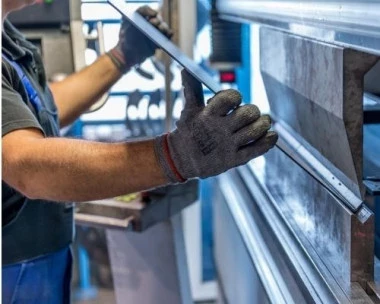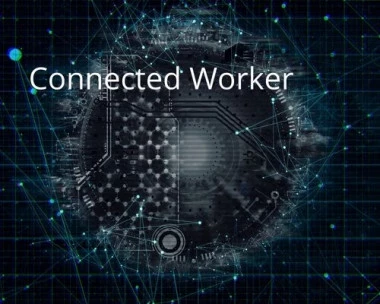The Disappearing Manufacturing Worker
Add bookmark
Like the Pete Seeger classic, many employers across all industries are now crooning a similar refrain: “Where have all the workers gone?”
Help wanted signs are popping up everywhere. Businesses are being forced to reduce hours or output at a time when demand for many products and services is at an all-time high. There are over 7 million unemployed people in the US, according to the latest statistics from the US Department of Labor, and yet businesses can’t find enough workers to keep their operations running at full tilt.
What gives?
There are long standing structural changes that help to explain some of the mismatch between employment and labor. The number of Americans age 65 years and older will increase about four times faster than the working-age population over the next 5 years, for instance, according to analysis from BMO Economics and Haver Analytics.
The Covid-19 pandemic has only added fuel to the fire. Nearly 4 million Americans have left the labor force since the pandemic began and labor force participation remains near four-decade lows. Despite new jobs being created at pace, many workers are choosing to opt out of work.
Nobel laureate economist columnist Paul Krugman recently wrote about this in his New York Times column. He observed that there may be a psychological reason that so many people have not returned to their workplaces, even as the economy opens up: they simply didn’t like their jobs in the first place but were reluctant to make a change.
Behavioral economists call this the “status quo bias.” The theory is that we’re willing to stay in a negative situation – the status quo - even if we don’t like it because change is hard. Better the devil you know.
The pandemic changed this, according to Krugman, because it forced people’s hands. As lock downs shut swaths of the global economy, millions of workers suddenly found themselves unemployed and considering their options. Many developed economies also stepped in with generous benefit schemes, which gave workers the breathing room to entertain new ideas and opportunities. Thus, when the economy started to reopen workers decided not to rush back to jobs they hated.
Although exact statistics are difficult to come by, the labor shortage has been hitting manufacturing hard and has been for years.
In a recent interview with me here at IX Network, Stephen Gold from the Manufacturing Alliance reported that the labor shortage is the issue at the top of manufacturing CEO’s agendas.
“Trying to find employees with the requisite skills to work on shopfloors and to fill R&D departments has become a chronic pain point. The sector has struggled for years to change its image and steer qualified high school and college kids towards their open doors,” said Stephen Gold. “Manufacturing was already behind the curve when the Great Resignation started, and now it’s got to work doubly hard to start channeling workers to its factories and R&D departments, along with retaining its current talent.”
Forget all the other buzz words - efficiency, throughput, automation, agility, machine learning, artificial intelligence, prescriptive maintenance, robots, digital transformation. If you don’t have people to do the work, you can’t get the job done.
Not only is it difficult for manufacturers to recruit staff, but it is also hard to retain them once they’re in the door.
Training provider Tooling U-SME conducted a survey in 2019 of senior leaders and management in manufacturing and found that nearly half of those manufacturing companies surveyed reported an average annual turnover of 20 percent of higher.
That turnover extracts a big toll on the bottom line of manufacturers. The cost of recruiting and training alone can be staggering. But beyond those obvious costs, there are the hidden costs of the loss of knowledge, decreased productivity and innovation, lower employee morale (who likes to see their colleagues quit?), and potential impact on customer satisfaction.
Enter Connected Worker technology. This technology – a category of applications that includes wearables, virtual reality, and mobile apps - allows frontline workers to connect with the resources and information that they need to get the job done safely and efficiently.
For instance, many manufacturers have already made digital work procedures, videos, and real time data available to help guide workers on the job.
The proponents of Connected Worker technology cite how it can improve everything from training through to asset management, quality and safety.
But there’s perhaps an overlooked benefit to Connected Worker Technology: improving employee morale.
“The days of the Industrial Revolution mindset – the ‘hey, here's a manufacturing job and you should be happy to have it. Now shut up and go do your work’ - are over,” observes Matthew DiGeronimo, plant manager at International Paper. “I truly believe that everybody wants to be part of a winning team. Younger generations, in particular, are demanding an environment that's different than their parents demanded.”
The concept of engaging manufacturing workers is not new. Taiichi Ono, an industrial engineer who was considered the ‘father’ of the Toyota Production System, famously said: “People don’t go to Toyota to ‘work,’ they go there to ‘think’.”
In other words, nobody wants to come to work and be treated like an automaton. We need to start from the assumption that we all want to take pride in the work we do and engage our brains to finds ways to do it better.
So how does Connected Worker technology help do this?
#1: Brings the work environment and tools into the modern era
The digital native generation - who have grown up in the era of ‘always on’ and ‘always connected’ technology - are the future of the work force. There’s evidence that they’re turning away from manufacturing jobs, that are seen as dirty, repetitive and archaic. When that perception meets up with reality of coming into a work environment that relies heavily on manual procedures, clunky ERP systems and pens and paper – manufacturing doesn’t just have a perception problem, it’s got a PR disaster. Connected Worker technology can help bridge the generational gap and engage the future workforce on their terms.
“The growth of digital technology and the Internet of Things (IoT), together with the convergence of operational and information technology, heralds a new era for these workers. By enabling a connected industrial workforce that can use smart devices, and IoT enabled assets, whole new levels of operational performance and safety can be achieved,” writes Accenture in a special report about driving value through connected industrial workers.
#2 Fosters a sense of community and makes workers feel valued
By allowing shop floor workers to tap into digital resources and the expertise of their colleagues, connected worker platforms can create a virtual community that bridges factory sites and shifts. Pet food manufacturer NestlePurina, for instance, uses a communications platform that allows workers to blast out “virtual high fives” to recognize a job well. Terry LeDoux, VP of Digital Manufacturing at the company, says that this helps make work more fun and makes team members feel valued for their contribution.
#3: Enables workers to solve problems collaboratively
As manufacturing environments become increasingly automated, the focus on developing staff that can think and problem solve is even more important. People bring a creativity that robots – even with all the machine learning and artificial intelligence today – still cannot.
Connected Worker technology help workers access real time operational data and gives them the tools to enable collaborative problem solving and data-driven insights so that manufacturers are not just engaging the hands of their employees but also their minds.
#4: Deliver more effective, hands-on training as employees need it
New employees can feel overwhelmed with the amount they need to learn. Traditional classroom settings can throw a lot of information at a person, most of which is forgotten the instant the employee leaves the classroom. By allowing workers to better access the resources they need during the flow of work Connected Worker Technology can reduce frustration, errors, and ensure better retention of knowledge. Virtual reality can also help by simulating experiences before the worker encounters the real situation.
The reality is that the labor shortage will not be going away anytime soon and using tools that get new employees up to speed quickly, engage their brains and foster a sense of community will be critical to recruiting and retaining staff.
Interested in Learning More?
Having frontline workers that are safe, connected and empowered to make intelligent, informed decisions is the number one way to build resilient operations. Join us at The Connected Worker Summit on February 8-10, 2022 and network with over 200 operations leaders at the Norris Conference Center in Houston, TX. Learn how to build a connected workforce to improve operational efficiency, training, asset management, quality, and safety. The Connected Worker Summit (oilandgasiq.com)


















